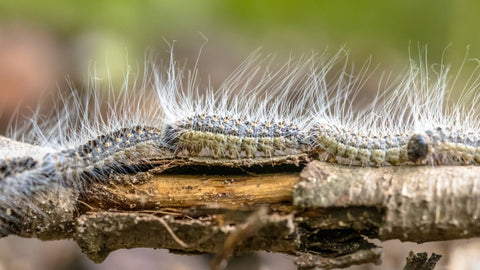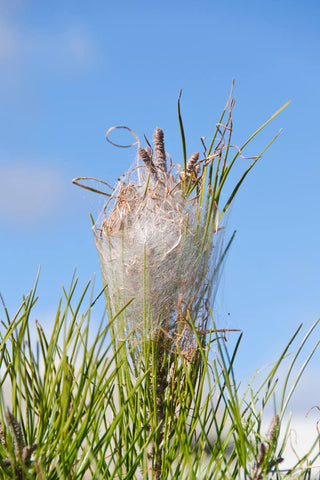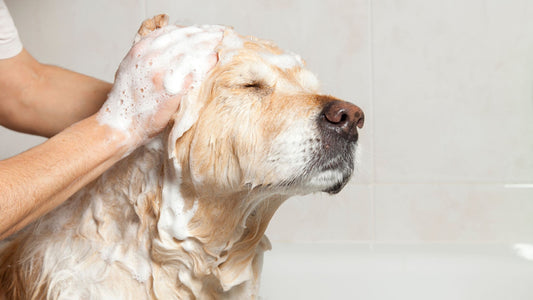How to protect your dog from pine processionary

Processionary is not only a threat to pine trees, but also to our furry friends. Learn how to identify it, prevent it, and what to do if your dog comes into contact with it.
What is the Pine Processionary?
The pine processionary , more than a simple nuisance for trees, is a latent danger for animals and people who come into contact with it. Its scientific name, Thaumetopoea pityocampa , suggests transformation ( thaumeto ) and compassion ( pityo ), reflecting the dramatic impact it can have on its environment. This insect goes through several stages in its life cycle, from egg to moth, but it is in its caterpillar phase where it represents a greater risk due to its stinging hairs loaded with toxins.

Identification of the Processionary
The ability to correctly identify the processionary and its nests can be the first line of defense to protect our dogs . The nests, which look like large cottony masses on the branches of pine trees, are a telltale sign of their presence. These caterpillars prefer temperate climates and are most active from the end of winter to the beginning of spring , depending on the climatic conditions of the region.
Processionary Risks for Dogs
The risks to dogs extend beyond direct contact. Even mere curiosity can lead to dangerous exposure if a dog inhales airborne stinging hairs or licks them off the ground . Symptoms can range from mild irritation to serious complications such as airway obstruction or severe allergic reactions . Prevention is crucial, as post-contact treatment can be complex and require immediate veterinary intervention.
Prevention and Protection
For effective protection, vigilance is key . During the processionary 's active season, regularly check pine trees in your area and report any nests to local authorities or pest control services. Educating the community about the risks and how to identify these nests can also help protect more dogs and their owners from potential encounters.
First Aid and Treatment of the Processionary Caterpillar
If a dog comes into contact with the processionary, time is of the essence. Physically removing hairs with tape can be an effective first step before washing the affected area. However, it is vital to prevent the dog from licking or scratching , as this can make the situation worse. Urgent veterinary consultation is essential to evaluate and mitigate the effects of exposure.

Control and Eradication of Processionary
Controlling the processionary population is a community effort that includes monitoring and treating affected trees. Biological control techniques have proven to be effective and environmentally friendly. Proper management of green spaces and public education are essential to minimize the risks associated with these caterpillars .
Frequently Asked Questions about the Processionary
Do all dogs react the same to the processionary?
No, sensitivity can vary significantly between individuals. Some dogs may experience mild symptoms, while others may have more severe reactions.
Is there any preventive treatment for dogs against processionary?
There is no preventive treatment, but keeping dogs away from areas known to have processionaries and training them not to touch or ingest unknown caterpillars are best preventive practices.
How long do processionaries remain active in the environment?
Processionary activity varies depending on climate and region, but they are generally most active from late winter to early spring.
Keeping our dogs safe from pine processionary requires vigilance, education, and community action. By understanding the life cycle of these caterpillars, recognizing the symptoms of exposure in our dogs, and knowing preventive measures, we can minimize the risk and protect the health of our pets and our community. Nature is a wonderful place to explore with our canine companions, but always with caution and preparation!



